Obama Castle, also known as Unpin Castle was a stone walled samurai fortress located in the Japan Seaside town of Obama, Toshiki District, Wakasa Province (currently Jonai, Obama City, Fukui Prefecture).
A kinsei, early modern period construction, Obama Castle is classified as one of the few rare umi-jiro — sea castles — as it faced the waters of the Japan Sea, and featured sea fed saltwater moats, and mooring facilities for official boats and ships within the castle precincts. The moats and baileys formed concentric protective barriers around the centrally located Honmaru bailey. As an early modern and Edo period castle, Obama was built in the center of a flat plain, on the delta of the Kita and Minami River mouths on Obama Bay. As such it was well positioned, surrounded by the sea, rivers, and wetlands, making it easy to defend, but difficult to attack. Design emphasis was placed on convenience for administrative processing rather than wartime defence. Obama was built primarily to serve as a symbol of the Shogunates’ authority in the lands and seas of the Wakasa region.
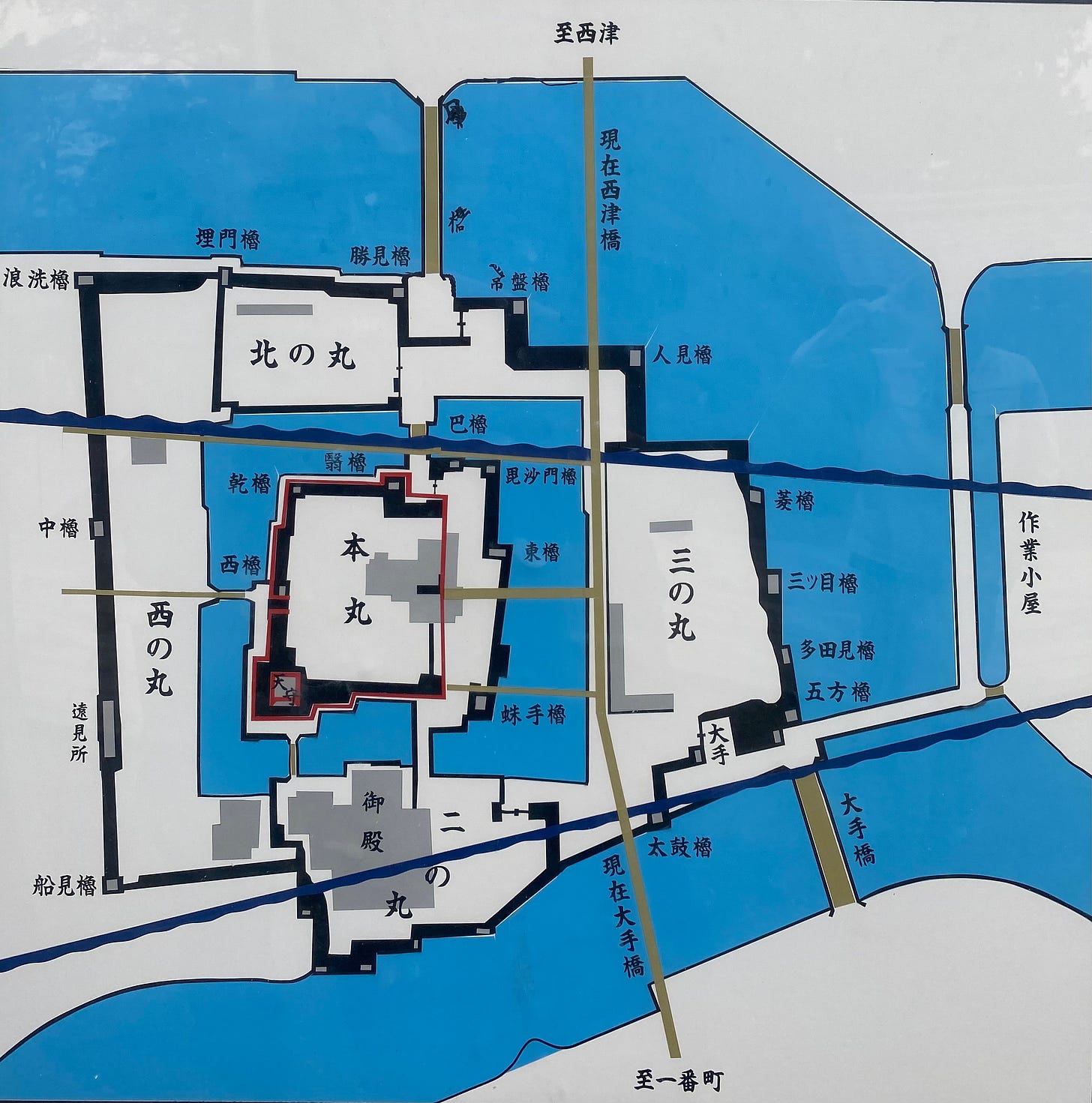
Kyogoku Takatsugu, who had served in the Tokugawa led forces at the Battle of Sekigahara in 1600, was awarded Wakasa Province and initially made the older, well established Goseyama Castle his residence. However, the main enclosure of Goseyama Castle was deemed inconvenient due to its position high on a mountain ridge, and the former shugo-kan governor’s residence at the foot of the mountain was too considered too small and rudimentary for a modern daimyo to carry out regional political affairs, and so in 1601 a new castle was planned.
Construction of the castle commenced in 1601 under the command of Kyogoku Takatsugu and was continued by the next generation of the Kyogoku. Kyogoku Tadataka, the second-generation lord of the Kyogoku clan, acquired Echizen Tsuruga District in 1624, and the Obama Kyogoku clan was established, but before the castle was completed, the Kyogoku clan were relocated to Matsue Domain in Izumo .
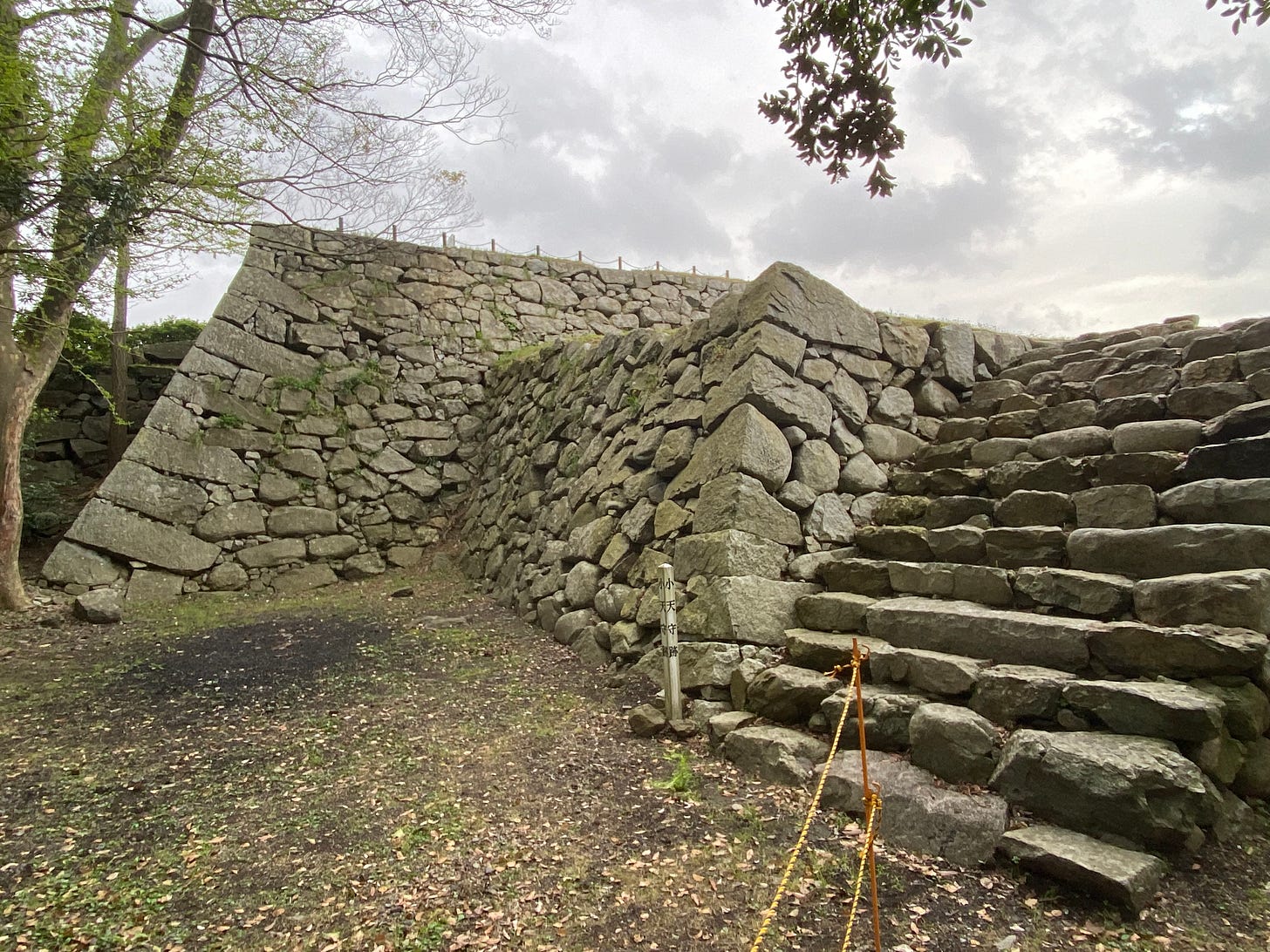

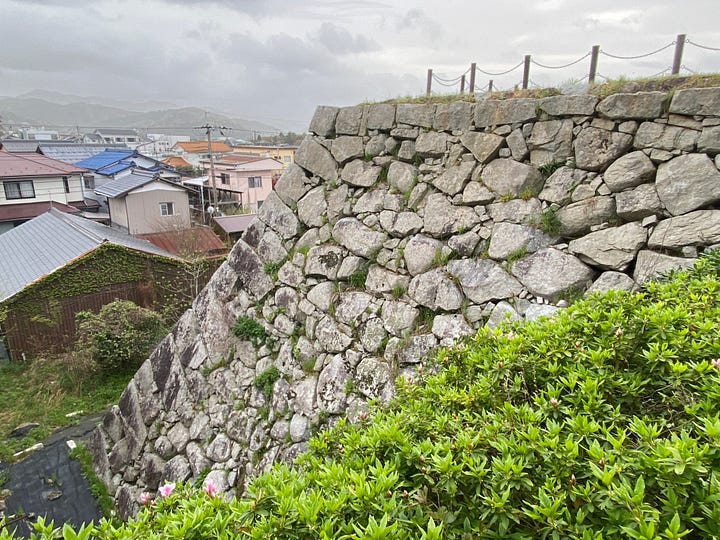
In 1634, the Kyogoku clan was transferred to Izumo Matsue domain, and were replaced by the Sakai clan, prominent figures in the history of the Tokugawa clan. Sakai Tadakatsu took control of Obama Domain with a 123,000 koku stipend. Under the Sakai, improvements and expansion of the castle continued. The Sakai clan drastically changed the outline, adopting a style similar to that of Kyoto’s Nijo Castle, and constructed a main keep. Obama Castle was completed eight years later in 1642, and from then until the fall of the shogunate and feudal period, and the beginning of the Meiji period, it remained the residence of the Wakasa Sakai clan until during the Meiji era.
During the Meiji period, an accidental fire destroyed most of the buildings, except for the and the remaining castle tower was sold, demolished and removed. Due to the expansion of the Kitagawa River, the enceintes other than the main castle have now become a river and a residential area. The only remains of the castle are the outer stone walls of the main castle. As for architectural remains, the main gate of the domain's school, `Junzokan,'' was relocated and rebuilt as the Junzomon,'' the main gate of Fukui Prefectural Wakasa High School. Additionally, the main formal shoin entrance has been relocated to Tada Temple in the city.
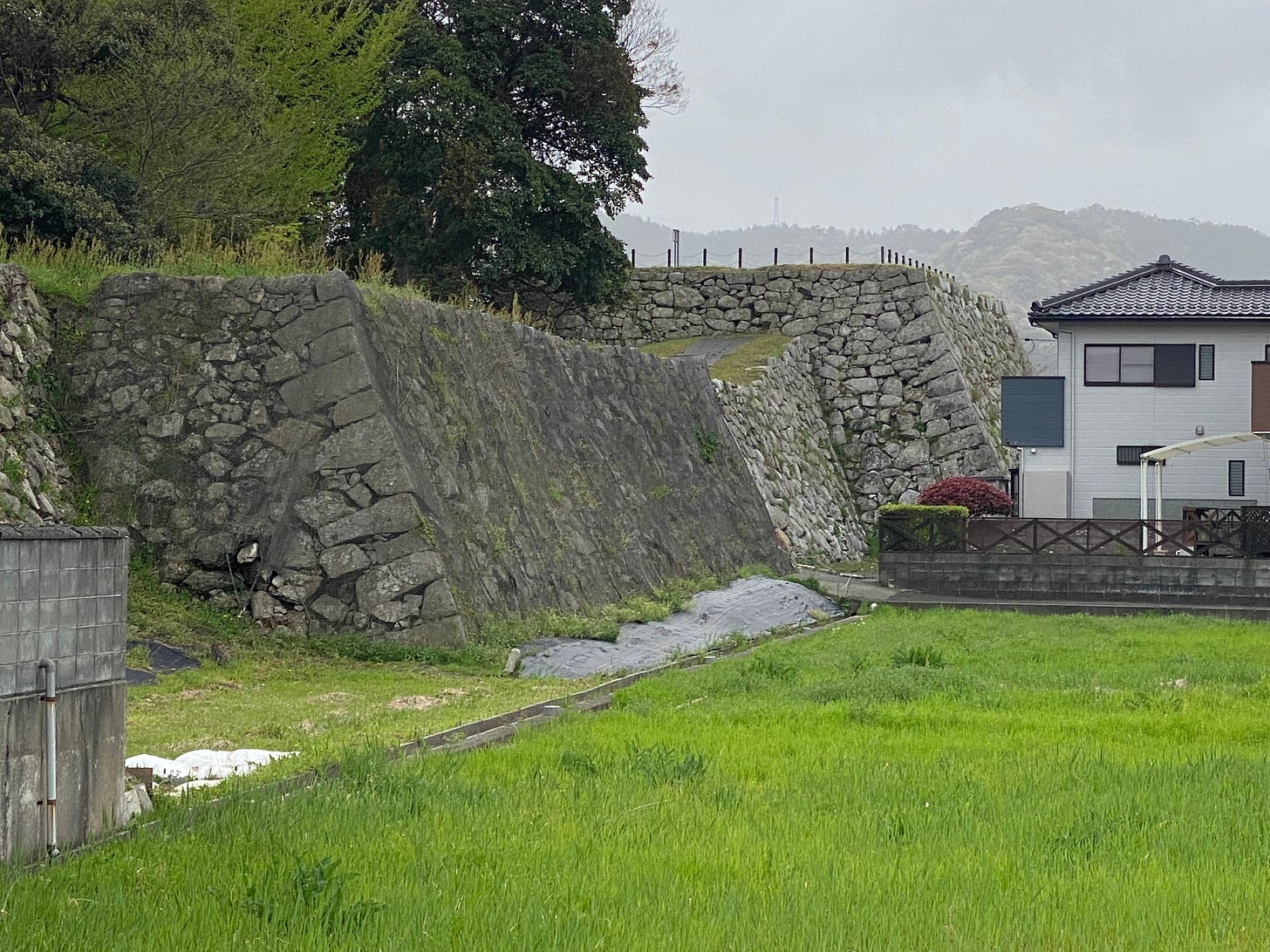
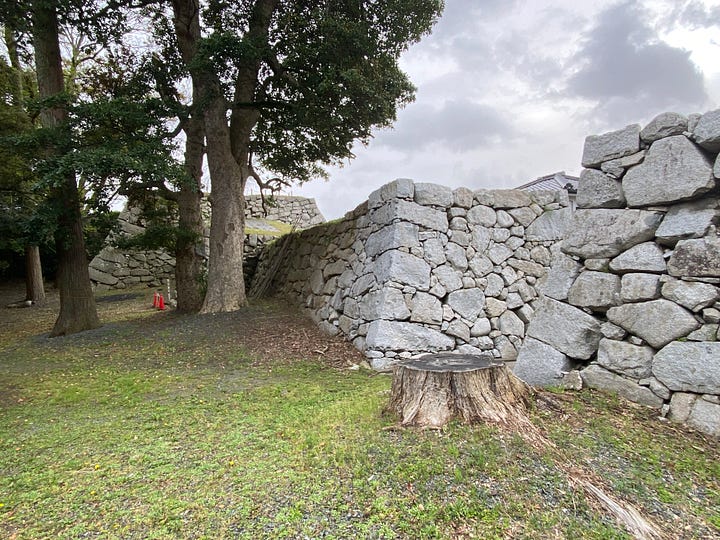

The early years of the Meiji Restoration saw an accidental fire break out in 1871 and most of the castle structures except for the tower keep was destroyed. The remaining tower was sold, dismantled and removed in 1874.
In 1875, Obama Shrine was built within the former main enclosure to enshrine the spirit of the domain founder, Sakai Tadakatsu, and some 80 years later in 1956, the castle ruins were designated as a Fukui Prefectural Cultural Property and Historic Site.
Obama Castle is a difficult castle to photograph, as most of the moats surrounding the Honmaru were filled in, and the land has since been zoned residential, with houses as close as a meter and a half from the castle’s stonework in places.
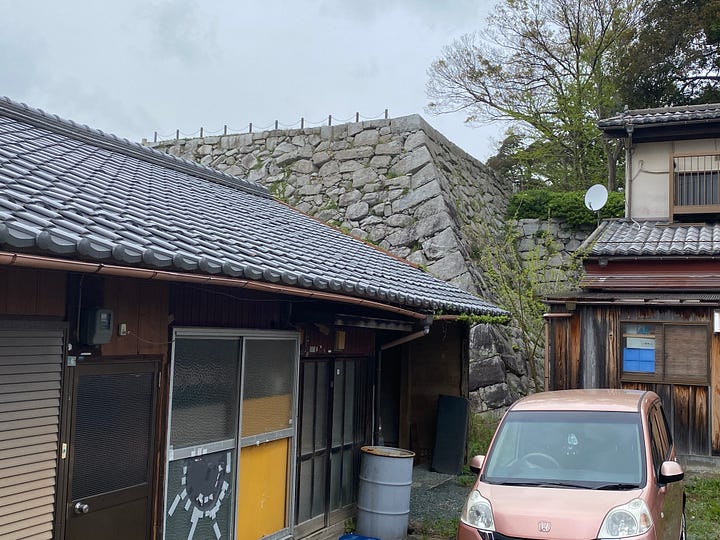

The ruins of Obama Castle stand today as a proud reminder of Obama’s importance during the two and a half centuries of the Edo period.
Samurai History & Culture Japan is a reader-supported publication. To receive regular new posts, access the archives, support the work, and join the community, please consider becoming a paid subscriber.



